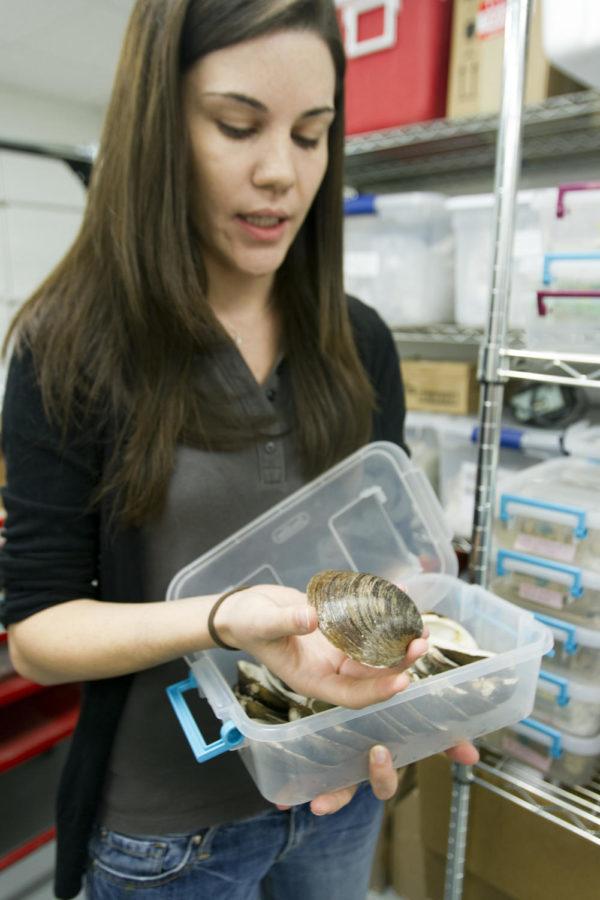ISU researchers use clam shells to measure climate change
October 25, 2012
The idea of studying oceanography in the middle of the landlocked Midwest may seem counter-intuitive, but distance has not stopped Alan Wanamaker’s research of climate change in the ocean.
“We want to better understand the mechanisms of climate change,” said Wanamaker, professor of geological and atmospheric sciences. The source for this research is the same as the source of famous East Coast chowder: clams.
“The growth increments within the clams follow the same basic principle as growth rings in trees, there is one increment for every year” said Shelly Griffin, graduate student in geological and atmospheric sciences.
Wanamaker said, “In a clam shell, that’s how we get there.”
Though Wanamaker admits there is some aspect of reinventing the wheel with his research, he believes the results of this new strategy could have important impacts on the understanding of climate change. “Trees represent only 30 percent [of the world]. We want the other 70 percent.”
This September, Griffin was joined by another graduate student in geological and atmospheric sciences, Maddie Mette, in Maine for a fishing expedition. The duo boarded a small lobster boat in the cold waters of the North Atlantic, gathering enough clam shells to bring all the way back to Iowa State for study.
When the clams reach Iowa State, the research gets complicated, Wanamaker said. The research Wanamaker and his graduate students perform, “in a clam shell,” involves taking samples from the shell and then testing those samples in the stable isotope lab in the Science I building.
“In our studies, we’ve found really good correlations with environmental variables like water temperature and productivity,” Griffin said. “We’ve gathered enough data that we know there’s an exciting story; we’re just beginning to figure it out now.”
The main piece of information they are gathering with this study is the temperature on the bottom of the ocean. This information can help researchers understand the relationship climates have with the ocean.
The researchers have gathered nearly 2,000 clam shells through three separate expeditions with some of them being almost 240 years old.
“In the end, we would like 1,000 years of temperature reconstruction,” Wanamaker said.
Karl Kreutz, professor at the University of Maine, coordinates with the ISU team in their research.
“We have some ideas as to why the earth went through different climate periods, but we don’t understand the details of what happened- how exactly did it behave on a regional scale,” Kreutz said.“The realization with these clam shells is basically cut it in half under a microscope; we can see growth in the ocean every year with different types of chemical measurements.”
Kreutz was an adviser for Wanamaker and Griffin during their time at the University of Maine. “It’s great seeing [Wanamaker] develop his research. I think they’re making great progress. I love to see my former students succeed,” Kreutz said.
Wanamaker and Griffin said there is a lot of potential for practical applications of their work. The team recently decided to put temperature gauges on the lobster traps of the fishers who have been assisting them.
“We have important information for the fishing industries,” Griffin said. “We’ve been able to add to the data of the Department of Marine Resources.”
The Department of Marine Resources is a coastal version of the Department of National Resources.
For now, the team is still reconstructing a timeline by going through their collection of shells one by one, a task that Griffin says could keep her here four more years. However, they believe the results will be worth the effort.
“Understanding how climate mechanisms behave can reduce uncertainty about future,” Wanamaker said.

















